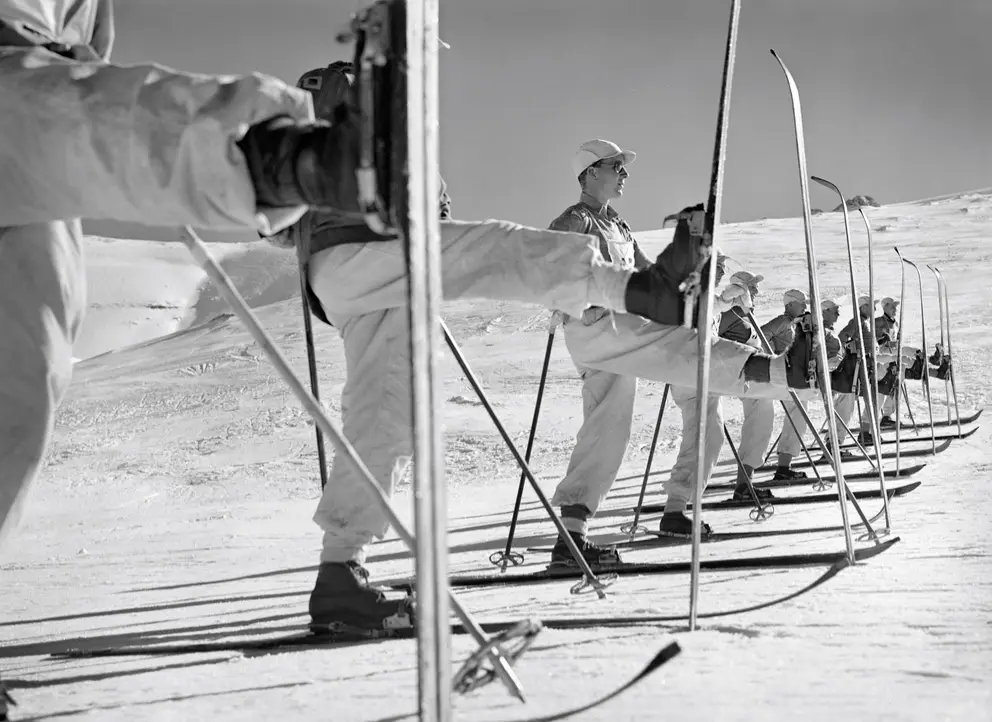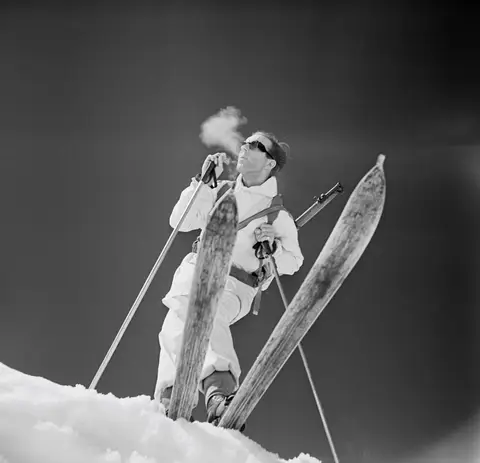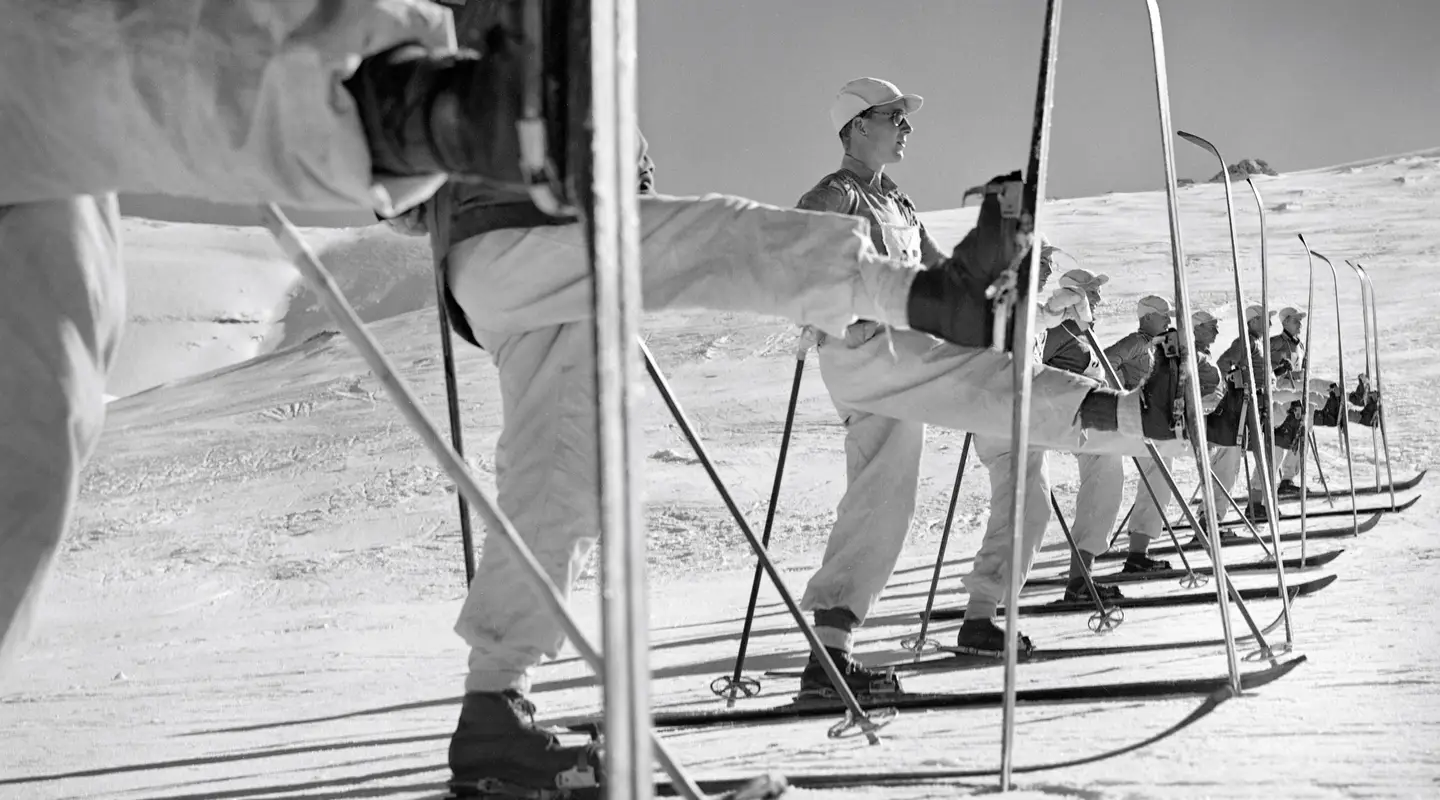On 2 December 1941, the 1 Australian Corps Ski School opened in Lebanon. General Sir Thomas Blamey believed that a skiing company would be an ideal addition to the forces during their winter garrison service, as well as pleasant recreation for the troops.
The school was made up of 200 volunteers from the 6th and the 7th Divisions, known as the 9th Australian Division Ski Company. Instructors were well known for their skiing prowess: Major James Riddell had skied for Britain in the 1936 Olympic Games, Lieutenant Ernest Mills was a Tasmanian langlauf champion, Bombardier George Stogdale had won Australian championships, and Sergeant John Abbottsmith had been an instructor at Mount Kosciusko.

Members of the ski school line up to practice the kick turn c. January 1942. Photographer: Frank Hurley
The school took over a hotel and barracks located in The Cedars, a mountainous area at 6,500 feet above Bcharre in Lebanon. The skis and boots provided to students had been made locally in the rush to find equipment in time for the training to start. There had been hopes of providing participants custom-made skis, but only two sizes were made, adjusted to the students’ needs within reason.
The instructors settled on teaching the Arlberg technique, as most of the instructors were familiar with that system. Captain Frank Hurley, Australian official war photographer and cinematographer, trekked to the school to film Snow Patrol (AWM F01154) in the first week of training. With Hurley’s previous work in Antarctica, he was a natural choice for the role.

An Australian soldier reaches the summit on his snow skis during training at the newly opened 1 Australian Corps Ski School.
Hundreds of enterprising men sought entry to the school, possibly imagining a snowy interlude from their war service. But the climate and the rigours of training proved to be more challenging than expected, and many applied to be transferred back to their original units.
There were a number of causalities from skiing injuries, snow blindness and sickness brought on by cramped living conditions. The school also required several evacuations and suffered a multitude of broken equipment.
A sapper recounted crashing during a trip down a mountain. After picking himself up, he turned to watch the rest of the group.
“The valley is not very wide, about the width of a tennis court, and seeing some hundred chaps come down en masse was simply terrific. There were bodies sprawling everywhere. Some chaps were going down gingerly, sidestepping, sno ploughing, short traversing etc.
Others adhered to the trust-and-bust theory and were shooting down like meteors – at one stage there were three swearing men, hopelessly entangled in the one heap. The only consolation was that although this took place in full sight of the General, he was pre-occupied with his efforts to stand on ski, and did not really appreciate what was going on.”
After only two courses, the school was disbanded on 26 February 1942 and was converted into a leave resort for Australian troops.
Aussie troops learn how to ski, December 1941

